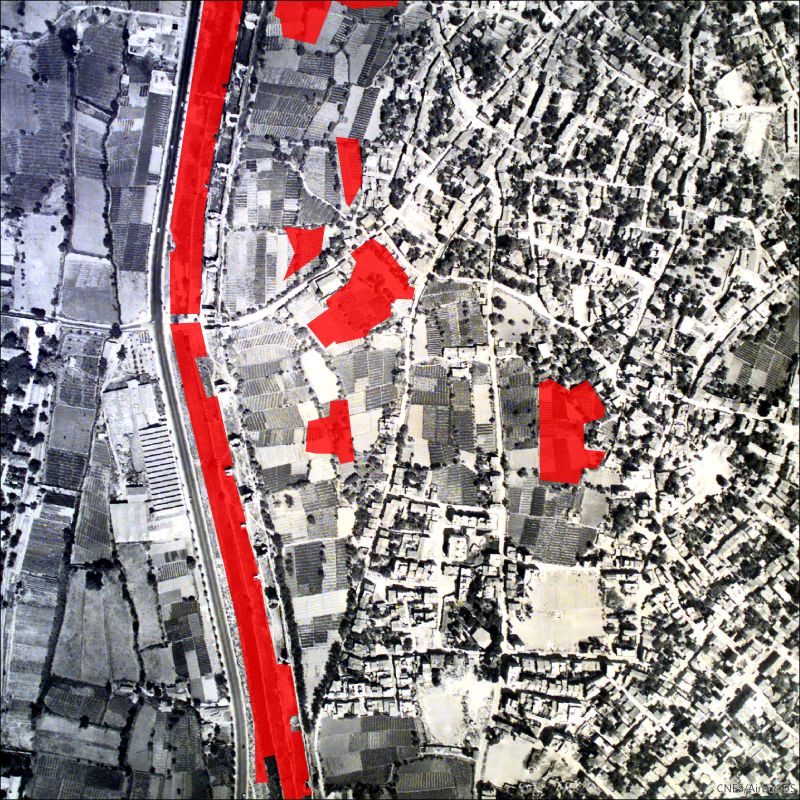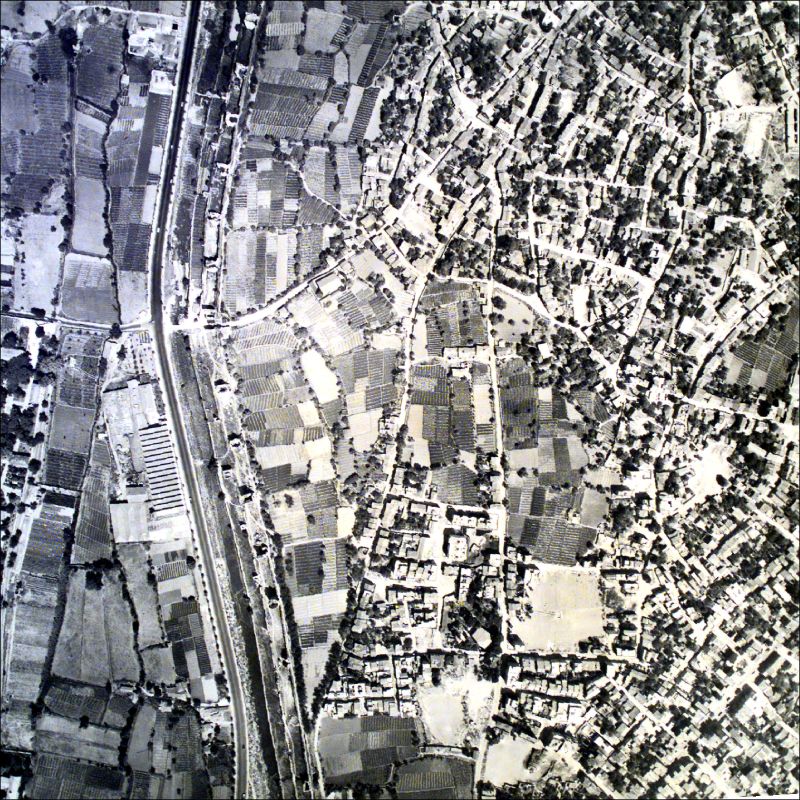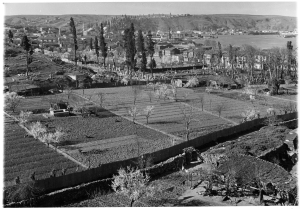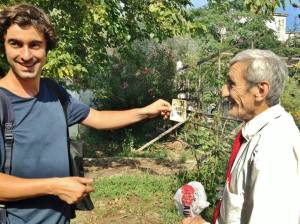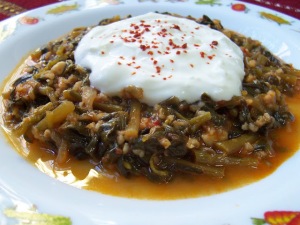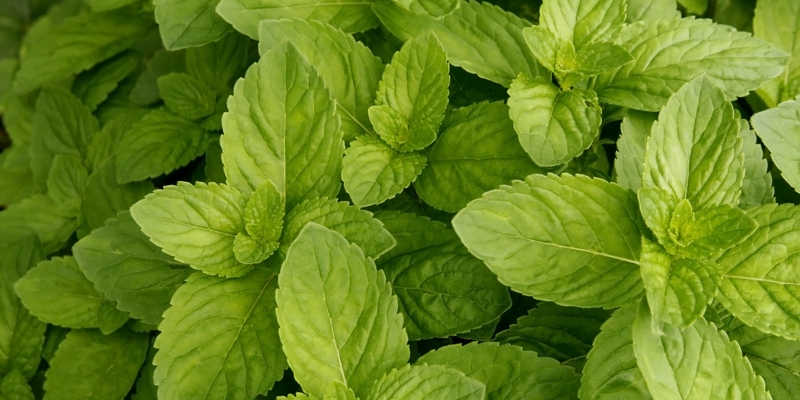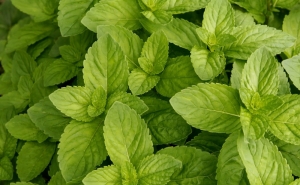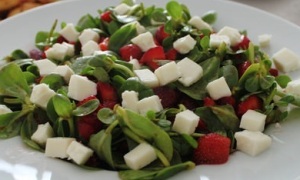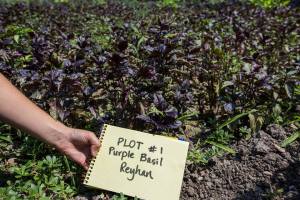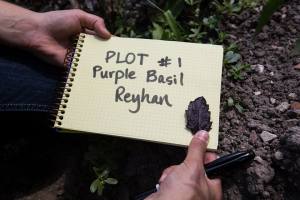Common purslane, Portulaca oleracea, is a member of the Portulacaceae family with more than 120 different species found in that family.[1] It is also known as pigweed, fatweed, pusle, and little hogweed, is an annual succulent herb in the family Portulacaceae that is found in most corners of the globe.[2] Purslane was one of the most widespread plants in the world since distant times.

Purslane / Portulaca Oleracea / Semizotu.
Purslane is a native of Persia where it was used over 2,000 years ago.[1] It was introduced to North America from India and Persia.[2] The Arabs in the Middle Ages called it baqla hamqa, which means “mad” or “crazy vegetable” because of the fact that its branches spread over the ground without any control. In Spanish, names such as verdilacas, yerba aurato and yerba orate are known (which again mean “crazy herb”).[3]
Nowadays it is distributed over the hot temperate zones of a great part of the world. Together with other species of the genus it occurs as a weed in the majority of tropical and subtropical countries.[4] The purslane is suitable for light (sandy) and medium (loamy) soils and prefers well-drained soil. It requires a moist light rich well-drained soil in a sunny position. Plants will not produce good quality leaves when growing in dry conditions. The soil should have soil pH of 5.5 to 7.[5]
Purslane flowers grow at the tips of the fat stems from late spring through late summer. The flowers typically open from mid-morning to early afternoon on hot, sunny days. Flowering takes place from May through September.[6] The yellow flowers give way to small, dark, pointed seed capsules that, when mature, break open and release an abundance of tiny, black seeds, each about the size of a grain of sand. [7] Seeds are tiny, less than 1/25 of an inch (1 mm) in diameter, circular to egg shaped, flattened, and brown to black with a white point of attachment. Numerous seeds are produced.[8]
Common purslane is edible, with a sweet, yet acid-like flavor. It has been cultivated in India and the Middle East and has been popular in Europe since the Middle Ages.[9] It can grow alongside roads, in crop fields, gardens, vineyards and orchards, in construction sites and other disturbed areas.
It was categorized in the Mediterranean countries of the Near East and central Asia as a weed and vegetable. For Istanbul and Turkey, due to its suitable conditions and also its acceptance as something edible, purslane has an important place. Therefore, not surprisingly, in our field trips for this class, at every functioning garden in Yedikule and walled-city, we saw huge amounts of purslanes.
Purslane From Sources[10]
Today, purslane is known to be antibacterial, antiscorbutic, depurative, diuretic and febrifuge. The leaves are a very rich source of omega-3 fatty acids which prevents heart attacks and strengthens the immune system.[11] How about before? Via looking at some sources the way it was used and its importance can be discussed.
It is mentioned in the “Natural History” of Pliny as one of the vegetables used by the Romans. Pliny, or Gaius Plinius Secundus, usually referred to as Pliny the Elder, was a Roman living about 23-79 A.D. [12] Also, one of the richest sources that can be used is the Geoponika since it is referencing other sources. In Geoponika, Purslane was mentioned a few times for its different usages. Taken from Varro, it is said that some vines fruit normally but not their grapes before they have swollen and ripened. These should be cured with purslane juice.[13] From there we can see that there is something called purslane juice. Cited from Demokritos, in order to make pomegranates bear plentiful fruit suggests to grind purslane and spurge together finely and smear around the base of the trunk.[14] Africanus proposes for making all trees fruit more heavily rubbing purslane and spurge, mixing and well pounding together, around the trunk is useful.[15] Paxamos claims purslane is applied as a poultice, cures erysipelas. The leaf, placed under the tongue, makes one less thirsty and for particular treatments for poultry one may treats the eyes of fowl by bathing the outer eye with human milk or with purslane juice.[16] According to Apsyrtos, in a case if a horse is feverish and thin from overwork, it is necessary to give- for three days or more, until healthy- a mixture of one kotyle goat’s milk, one metron frumenty, half a kotyle olive oil, 4 eggs, juice of pounded purslane.[17]
While searching from the Internet I found this site about the sources mentioning purslane in some detail which I found very valuable and would like to take a part of it as a long quote here: “Columela writes in his poem on the garden: “Already the juicy purslane covers the dry beds”; and in Los doce libros de agricultura: “Leafy purslane appeases the plot’s thirst” (Book X); Paladio refers to it exclusively because of its mucilaginous, medicinal and veterinary properties. Similar references are found in Kastos, taking up the Byzantine tradition. The writers of oriental and Arabic treatises concerned themselves most with this vegetable. Ibn Wahsiyya describes its cultivation in the Near East, presenting it as a summer crop. Most of the Hispano-Arab agronomists deal with this plant. Arib (tenth century) mentions it in his Calendario agricola. Al Zahrawi and Ibn Hayyay (eleventh century) also mention it. Ibn Bassal (eleventh century) deals extensively with its cultivation, already recognizing a certain intraspecific variability, setting out its temperature and water requirements (summer cultivation and irrigation or vegetable garden), drawing up a sowing calendar which extends from March to August and demonstrating the practice of two basic cultivation periods, depending on whether the aim is to produce seed or to produce for human consumption. Sowing quantities and manuring and irrigation requirements also appear and are dealt with in great detail by the author. Ibn Wafid (Hispano-Arab agronomist of the eleventh and twelfth centuries) mentions it under the names baqla hamqa’ and missita. Ibn al-Awwam, in his Kitab al-Filaha, recalls that it is mentioned by almost all the Arab authors and refers to different varieties. He uses the adjectives “mild”, “vain” and “blessed”.[18]
Purslane Trivia
Through the research I also learned that the thing I know as semizotu (purslane) has different names. For instance in Mersin it is called tömeken, in Elazığ, Urfa and most of the Aegean cities it is called pirpirim, in Adana it is soğukluk, in Malatya it is known as pırpır, in Karaman, the name is töymakan, around Tunceli it is perper and in some places around Mediterranean it is tohumeken. Some of the names are different because they are wild variations of purslane that we have in Istanbul, but it turns out the names are also used interchangeable at some point.
Especially for the Aegean region, Purslane is known to be the most important member of the dining tables. It is something cultural. As a sign, there is even a well-known folk song mentioning the purslane. It is a song attributed to Aegean cities of Balıkesir and Çanakkale: “Bahçelerde pirpirim, yandım Ayşem / Hasta oldum yatarım, yandım Ayşem / Hekim, doktor istemem, yandım Ayşem / Sevdiğimi getirin, yandım Ayşem…”[19]
My relationship with semizotu is a long and very intense one thanks to my mother’s “we should eat some healthy things” attitude. The semizotu salad made with yoghurt is a loyal member of our dinner tables. Also, semizotu is something like spinach for Turkish people. Even the recipes for the way they are cooked are very similar. One can make a salad out of it with or without yoghurt, or use it as an ingredient for börek or poğaça (roughly translated as pastry), it can be the main ingredient of soup or part of a vegetable soup. Moreover, of course, there is a vegetable dish made out of it that the ingredients can change according to cook’s wish or the equipments present at the moment of preparing it.
Purslane Recipe
“Purslane is a pleasant salad herb, and excellent for scorbutic troubles. The succulent leaves and young shoots are cooling in spring salads, the older shoots are used as a pot-herb, and the thick stems of plants that have run to seed are pickled in salt and vinegar to form winter salads.”[20]
At this point, I would like to add one of the delicious salad recipes that can be made with Purslane.
Purslane Salad with Strawberries and Cheese.
One bunch of Purslane (it is sold as bunches in Istanbul)
10-15 strawberries
30 gr. white cheese
2 tbsp olive-oil
3 tbsp pomegranate syrup
Half a glass of lemon squash
Walnuts
Clean the purslane and wash it with strawberries. Cut the non-leaved parts and separate, then chop rest of the material and put it in a bowl. Cut the strawberries in the half and dice the cheese. Then add them to the bowl along with the walnuts which should be also cut in the half or even smaller. Add the olive oil with the lemon juice. Mix all the ingredients. Put them in a salad bowl and before you serve add the pomegranate syrup. Voila!
P.s: You should prepare the salad not long before you serve it since the strawberries would be ruined otherwise. And also if you plan to serve it after some time, you should not add the lemon and olive-oil until the last minute.
[1] Accessed August 4, 2014. http://www.ipm.ucdavis.edu/PMG/PESTNOTES/pn7461.html
[2] “Genetic improvement of Purslane (Portulaca oleracea L.) and its future prospects.” Accessed August 4, 2014. http://www.ncbi.nlm.nih.gov/pubmed/25085039
[3] James M. Stephens,”Purslane – Portulaca oleracea L.” Accessed August 4, 2014. http://edis.ifas.ufl.edu/mv118
[4] Richard Hoyt, “Purslane Plant Care” Accessed August 4, 2014. http://homeguides.sfgate.com/purslane-plant-care-37723.html
[5] Kathy Griffiths, “Purslane” Accessed August 4, 2014. http://www.herballegacy.com/Griffiths_History.html
[6] Ibid.
[7] Richard Hoyt, “Purslane Plant Care” Accessed August 4, 2014. http://homeguides.sfgate.com/purslane-plant-care-37723.html
[8] Accessed August 4, 2014. http://www.ipm.ucdavis.edu/PMG/WEEDS/purslane.html
[9] Frances Robinson, “Power-Packed Purslane” Accessed August 4, 2014. http://www.motherearthnews.com/organic-gardening/power-packed-purslane-zmaz05amzsel.aspx#ixzz39T9Vg6T2
[10] Accessed August 4, 2014. http://www.ipm.ucdavis.edu/PMG/WEEDS/purslane.html
[11] Accessed August 4, 2014. http://www.ipm.ucdavis.edu/PMG/PESTNOTES/pn7461.html
[12] For further information about Purslane’s ancient and modern sources see. http://www.herballegacy.com/Griffiths_Bibliography.html
[13] “Purslane (Portulaca)” Accessed August 4, 2014. http://www.ediblewildfood.com/purslane.aspx
[14] Helen Roca-Garcia, “Weeds: A Link with the Past” Accessed August 4, 2014. http://arnoldia.arboretum.harvard.edu/pdf/articles/1970-30-3-weeds-a-link-with-the-past-purslane.pdf
[15] Bassus Cassianus. “Geoponika: Farm Work: A Modern Translation of the Roman and Byzantine Farming Handbook.” (Totnes, Devon: Prospect Books, 2011), 143.
[16] Ibid., 214.
[17] Ibid., 231.
[18] Ibid., 266 and 289.
[19] Ibid., 310.
[20] “Purslane: Proprieties, uses and cultivation.” Accessed August 4, 2014. http://www.mdidea.com/products/new/new03304.html
[21] Translation can be like: “Purslane in the gardens, oh my Ayşe / I feel sick, resting, oh my Ayşe / I don’t want a physician or doctor, oh my Ayşe / Bring me my beloved, oh my Ayşe…” http://sarkilarnotalar.blogspot.com.tr/2011/11/karyolamin-demiri-yandim-aysem.html Also, you can listen a version of it from: http://www.youtube.com/watch?v=ZJm1KIgy13Q
[22] Kathy Griffiths, “Purslane” Accessed August 4, 2014. http://www.herballegacy.com/Griffiths_History.html
